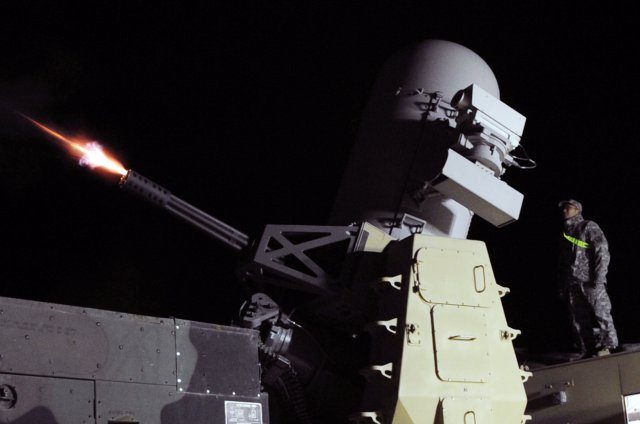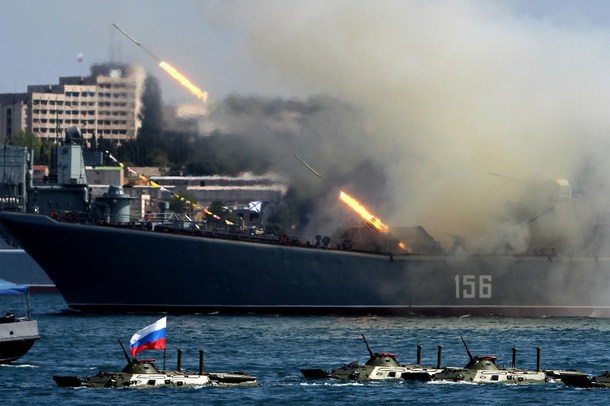Game-changer armament technologies come just once in a blue moon, said Michael Zoltoski, chief of the Army Research Lab’s Lethality Division.
The first blue moon moment came during the 1950s, with the development of tactical nuclear weapons, he said. The second was during the mid-1980s, with the introduction of stealth, precision-guided munitions and armaments linked to enhanced intelligence, surveillance and reconnaissance.
The third blue moon moment has now arrived, at least developmentally, he said.
Zoltoski spoke April 21 about future weapons systems during the National Defense Industrial Association’s 2015 Armament Systems Forum.
BREAKING THE COST CURVE
The desire for game-changer technologies came about over the last decade, Zoltoski said.
The adaptive enemy on the battlefields of Iraq and Afghanistan were able to invert the cost curve in their favor by defeating expensive American equipment using low-cost improved explosive devices, or IEDs, and rocket-propelled grenades. Defeating these primitive devices forced the United States to spend a lot of money on detection, firepower and protection.
Zoltoski said that looking back over the years – as far back as Operation Desert Storm – one can see that the Army has fought in “relatively pristine, uncluttered environments.” He said that deserts and areas with relatively low population densities allow missiles and aircraft to take out targets without causing a lot of collateral damage.
There were cities where fighting occurred, to be sure, but nothing like what the Army anticipates its battlespace will be in 10, 20 or 30 years, he said. The future battlespace, he said, will likely include “megacities” of 10 million or more people. The enemy, already adept at hiding amongst civilians, will also be holed up in subways, pipes, sewers and tall buildings.
A lot of population growth is also occurring in tropical areas where, outside these megacities, there is triple-canopy jungle, where adversaries can also lodge undetected, he said.
OPEN CAMPUS
The Army’s Unified Quest exercises have focused on this emerging threat scenario, he said, as the doctrinal “Army Operating Concept – Win in a Complex World.”
The Army Research Lab, or ARL, has also been at work finding ways to defeat the enemy in these environments without breaking the bank, he said.
ARL’s new business model for moving forward cost effectively with armament solutions, he said, is called Open Campus. ARL is opening its facilities to industry and academia in a collaborative effort.
The lab offers civilian scientists a research facility that they might not otherwise have access to and it benefits the Army as well, he said.
PROMISING LINES OF RESEARCH
Zoltoski touched on some of the research at ARL’s Open Campus.
Energy coupled to matter, or ECM, is one such emerging technology. ECM is focused on developing stronger and more fatigue-resistant munitions and weapons by introducing intensive magnetic, microwave, microgravity, acoustic or electrical fields during the manufacturing stage.
The outcome could result in an exotic materials with improved performance, he said, adding that a lot of the current research is being done using modeling and simulation, which allows one to explore many different material structures before making them.
By improved performance, he said, three to 100 times more energy could be produced so that a 40mm gun, for example, could produce as much energy as a 155mm gun without blowing up.
Another area of study involves replacing kinetic projectiles with specialty rounds that result in “incapacitating someone, with reversibility,” he said, meaning that people could be knocked out of the fight but not killed or seriously injured.
Such technology, he said, does not involve drugs or chemicals and could be used in densely populated areas where the likelihood of collateral damage to noncombatants would make targeting difficult.
Nonlethal research that ARL is focusing on includes bright light and acoustic stimuli as well as directed electromagnetic energy.
Hitting multiple targets with just one shot is another avenue in development, he said.
The Navy and Air Force approach focuses on converging munitions from many sources and directions on a single target, such as a plane or ship.
The Army’s approach is the opposite, he said. The Army would like to fire one shot which contains a packet of shots, operating in a “parent-child” manner. As the packet approaches the area, it breaks apart into separate projectiles that can hit a multitude of targets, using on board energy in a more effective manner than it is used today.
This distributed, cooperative and collaborative engagement ties together the fields of information, computational, material and lethality sciences and offers the potential to revolutionize how the Army operates in a complex world of the future.
FUTURISTIC WEAPON
Following Zoltoski’s discussion, Mark Serben, tank and armor program integrator at U.S. Army Armament Research, Development and Engineering Command, said the Army has successfully demonstrated an extended area protection and survivability, or EAPS, technology, in this case used with a Bushmaster 50mm cannon, can successfully track and prosecute distant moving targets using interferometric radar and radio frequency communication.
Serben showed several videos of EAPS in action against unmanned aerial vehicles. Rounds could be seen course-correcting in mid-flight to destroy UAVs.
Such technology, Serben said, could result in cost savings and more accurate targeting.











